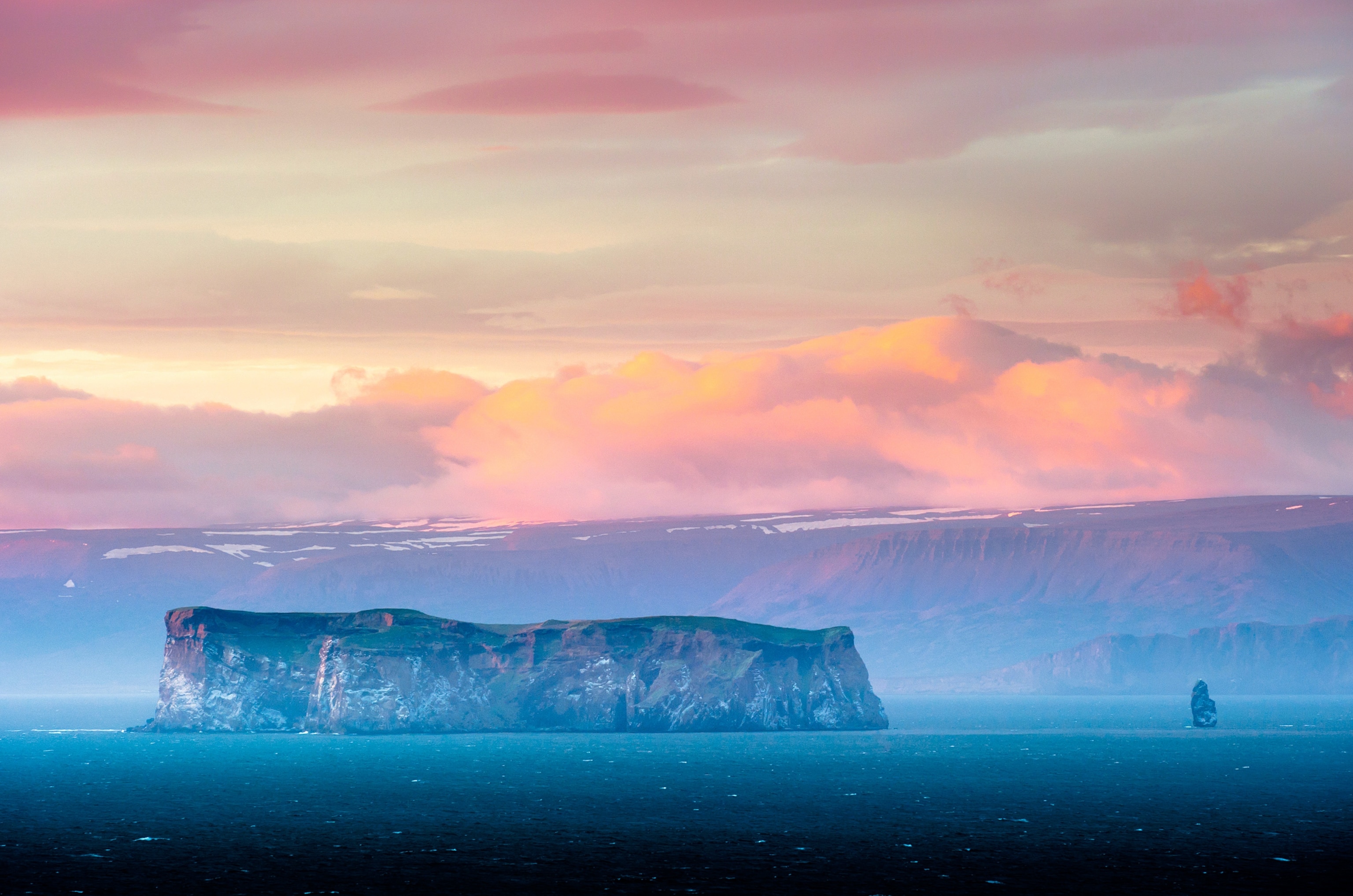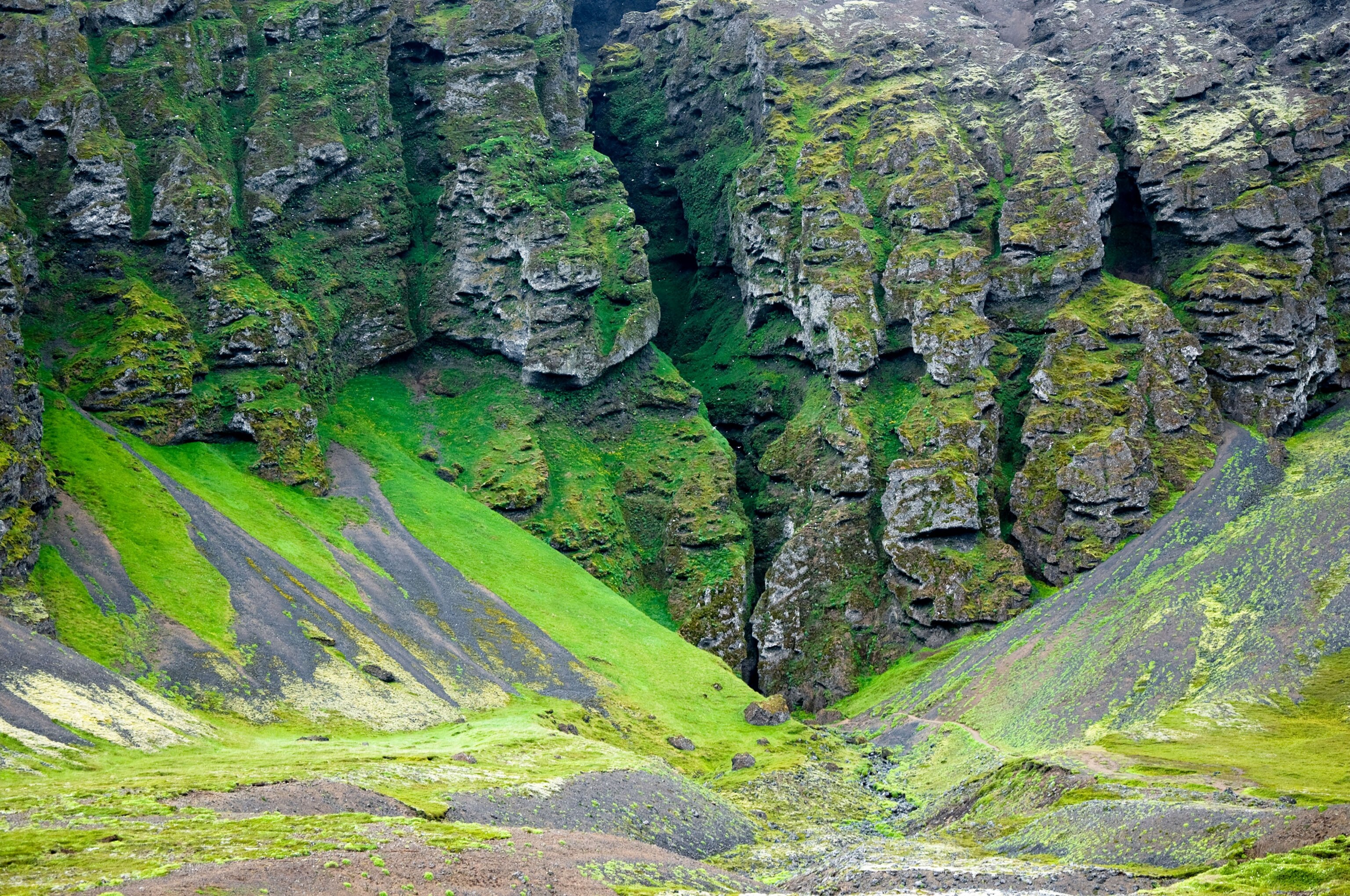
The Eerie Folktales Behind Iceland’s Natural Wonders
Beware of trolls.
The scenic country of Iceland is known for its friendly locals, jaw-dropping waterfalls, and some of the best views of the Aurora Borealis in the world. A lesser known aspect of the popular tourist destination is its quirky and distinctive folklore, which feature characters such as trolls, elves, ghosts, and fairies, and are integrated into the histories of many of the country's famed natural formations.
These tales have been recorded from as early as the 12th century, and were told to children for more than just entertainment. The environment of the country has always been harsh, especially during winter months when there are only a few hours of light each day. These fantastical stories are passed on through generations in the spirit of teaching Icelandic children how to live and interact with such an unforgiving environment.
Many Icelanders still hold these tales in high regard. Recent construction projects, including a proposed road development through the ancient Gálgahraun lava field, have been halted because the area is believed to be home to elves and dwarves. Though there have been thousands of tales and myths told throughout Iceland's history, here are a few that are particularly interesting.
Reynisfjara, Vik
Just outside of the tiny town of Vik, whose population hovers just above 300, lies the famed black pebble beach called Reynisfjara. Towering, hexagonal basalt columns rise from the dark sand at the base of Reynisfjell Mountain, and 216-foot rock pillars called Reynisdrangar jut out of the turbulent North Atlantic Ocean just off the coast.
According to Icelandic folklore, these pillars actually used to be trolls. While dragging a three-mast ship towards land, the trolls were taking too long to reach the shore, and at the break of dawn were instantly turned to stone. Even today, it is believed that if you drive near by the cliffs you can hear their wails and moans, as they long for their home in the mountains.
Drangey Island

The small volcanic island of Drangey can be seen from the shores of Skagafjörður—a deep bay in northern Iceland. Marked by sheer, jutting cliffs, Drangey is home to a wide diversity of birds such as puffins and guillemots. The island is also well-known as the place of refuge for one of Iceland’s most famous Vikings, Grettir “the Strong” Asmundarson. The longest surviving outlaw in the history of Iceland, he lived on Drangey island for three years before being able to return to civilization.
Legend tells a tale of men who visited the island to hunt birds or collect their eggs, who were sent plummeting to their death by the hands of a demon who inhabited Drangey. The patron saint of Iceland, Gudmunder the Good, was called upon to bless the island. Afterward, Gudmundur came across the demon who said, “Even evil must have a place to live.” The demon was granted a small area of the cliffs, now called Heathen Cliff. The area is no longer used for hunting or egg picking for this reason.
Dimmuborgir

Located in Northern Iceland are the unique rock formations of the Dimmuborgir lava formations. These volcanic pillars and tubes scramble their way across the landscape, created by hot lava that once streamed over ponds of water.
These dramatic formations serve as the backdrop for a dark mythological tale. Roughly translating to “Dark Castles” in Icelandic, Dimmuborgir is thought to be the home of Grýla, the homicidal half troll, half ogre. Her 13 children are known as the Yule Lads—mischievous Icelandic renditions of the western Santa Claus. In the 13 days leading up to Christmas, children around Iceland leave their shoes in the window sill and receive gifts if they have been well-behaved. Those who have been naughty receive only a rotten potato, and might be snatched by the Lads and cooked for Grýla’s dinner. Grýla also owns a large black cat who eats only once a year. It waits until all of the children unwrap their Christmas gifts, and then eats anyone who didn’t receive a piece of clothing.
At one point in 1746, children were so afraid of being eaten that the government had to step in and put a ban on using the myth as a scare tactic.
Rauðfeldar Canyon, Snæfellsnes Peninsula

The Snæfellsnes Peninsula in western Iceland is filled with waterfalls, mountains, lava fields, charming seaside villages, and some of Iceland’s only golden and pink sand beaches.
The entire peninsula is named after half troll, half man Bárður Snæfellsás. Bárður, whose father was half a titan and his mother a human, settled in Iceland in the 9th century. Rauðfeldar canyon or Rauðfeldsgjá gorge, received its name from a tragedy that took place here between Bárður, his eldest daughter Helga, and his half-brother Þorkell’s children. Þorkell’s son, Rauðfeldur, pushed his cousin onto an iceberg, and it drifted towards the open ocean until she eventually reached Greenland. When Bárður found out he was livid. He grabbed his nephews from outside their home and threw Rauðfeldur into a large, deep gorge, which then became the young troll’s grave.
Völvuleiði, Hólmanes

In eastern Iceland, a highway connects the port towns of Reyðarfjörður and Eskifjörður. Both situated on the water, Reyðarfjörður is known for having East Iceland’s longest fjord, and Eskifjörður for its large fishing industry and beautiful mountain waterfalls.
The bones of an Icelandic female prophet, or völva, lie a short distance away from the highway under a pile of stones. According to legend, she has been protecting the two towns for centuries, even long after her death. As long as her bones remain at the burial ground, it is said her protective role over the towns will continue. In 1627 Algerian pirates supposedly approached the eastern shore with a plan to pillage the port towns. The völva was one step ahead of them, and produced a thick, massive fog that forced the pirates to abandon their mission and return to the open ocean.








